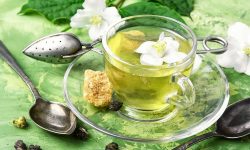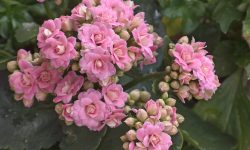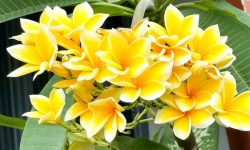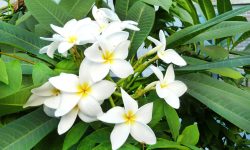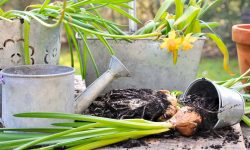Cherry blossoms hold a special place in the hearts of nature lovers, photographers, and seasonal travelers across the United States. Their fleeting beauty marks the arrival of spring and creates a magical ambiance in parks, gardens, and urban streets.
Understanding when cherry blossoms bloom in different parts of the U.S. not only enhances your appreciation of these delicate flowers but also helps you plan the perfect outing to witness their spectacular display.
The Life Cycle of Cherry Blossoms
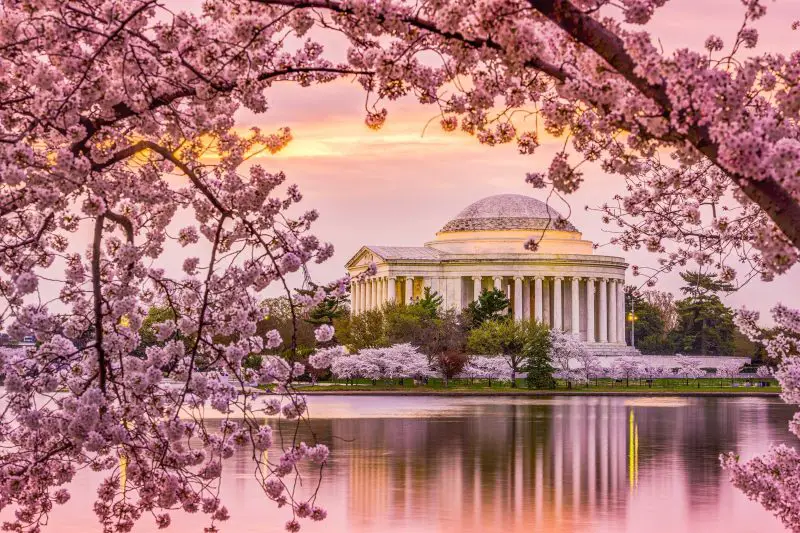
Cherry blossoms, particularly those of the Japanese cherry or sakura trees, follow a seasonal pattern that depends heavily on climate. The blooming process typically begins after a period of dormancy during the colder months. As temperatures rise and daylight increases, the trees start to awaken. Buds begin to swell and eventually burst into full bloom, a process known as anthesis.
The full bloom stage, or “mankai” in Japanese, occurs when at least 70% of the flowers on a tree have opened. This stage generally lasts only a few days to a week, depending on weather conditions. Rain, wind, or unseasonably warm or cold temperatures can shorten the blooming period. Following the peak bloom, the petals fall gracefully like confetti, often covering the ground in a pink-and-white carpet.
How Climate Influences Bloom Times
Climate is the most significant factor affecting the timing of cherry blossom blooms. Warmer regions see blossoms earlier, while cooler regions experience a delay. Temperature fluctuations, especially in late winter or early spring, can accelerate or postpone the blooming timeline. For example, a sudden warm spell in March might cause blossoms to appear earlier than expected in mid-Atlantic states.
Humidity and precipitation also play a supporting role in the blooming process. Too much rain can damage fragile petals, while prolonged dry periods may delay blooming altogether. Moreover, urban heat islands—areas where human activity raises local temperatures—can cause cherry blossoms in cities to bloom earlier than those in surrounding rural regions.
Cherry Blossoms in the Mid-Atlantic Region
The Mid-Atlantic is perhaps best known for the stunning display of cherry blossoms in Washington, D.C. The Tidal Basin, lined with thousands of cherry trees gifted by Japan in 1912, becomes a vibrant sea of pink and white each spring. In this region, cherry blossoms generally bloom between late March and early April. However, the exact timing varies from year to year depending on the weather.
Baltimore and Philadelphia also host their own cherry blossom events, though on a smaller scale. These cities typically see blooms in early to mid-April. The combination of coastal proximity and urban heat contributes to slightly earlier bloom times compared to interior areas with similar latitudes.
Blooming Patterns in the Southeastern U.S.
The Southeast, with its milder winters and earlier springs, often enjoys the first cherry blossoms of the season. Cities like Atlanta, Georgia and Charleston, South Carolina can expect blooms as early as mid-March. These regions benefit from a subtropical climate, which means the blooming period can last a bit longer if conditions remain stable.
In addition to ornamental cherry trees, some Southern cities feature native flowering trees with similar pink and white blooms. While not true cherry blossoms, they still add to the seasonal charm and often bloom around the same time. The longer growing season in the Southeast sometimes allows for multiple waves of blooming trees in public gardens and neighborhoods.
Timing in the Northeastern States
The Northeastern U.S., including states like New York, Massachusetts, and Connecticut, generally experiences cherry blossom blooms in mid to late April. In some years, especially when winter lingers, the blooms may not arrive until early May. The trees in this region are more susceptible to late frosts, which can damage early buds and delay the flowering process.
In New York City, Central Park and the Brooklyn Botanic Garden are popular spots for cherry blossom viewing. The high latitude and coastal winds influence bloom timing, often pushing it later than in southern counterparts. Still, the contrast of cherry blossoms against urban skylines creates a breathtaking seasonal display that draws large crowds every spring.
When Blossoms Appear in the Midwest
In the Midwest, cherry blossom trees are cultivated in many public spaces, botanical gardens, and private yards. States like Illinois, Ohio, and Missouri typically experience blooms between mid-April and early May. The timing is highly variable and often depends on how quickly spring arrives following a sometimes extended winter.
Chicago’s Jackson Park and Missouri’s Missouri Botanical Garden both feature collections of cherry blossom trees. These areas can offer an impressive bloom display if the weather cooperates. Unpredictable spring storms and cool fronts may affect the timing and longevity of the blooms in the Midwest more than in other regions.
Cherry Blossom Season in the Pacific Northwest
The Pacific Northwest, known for its temperate climate and abundant rainfall, provides a unique environment for cherry blossoms. Cities like Seattle, Washington and Portland, Oregon often see blossoms in late March to early April. The marine-influenced climate helps maintain a consistent blooming schedule, although heavy spring rains can sometimes reduce bloom visibility.
The University of Washington’s Quad in Seattle is an iconic spot for cherry blossom viewing. Here, mature Yoshino cherry trees put on a magnificent show each spring. Portland’s Waterfront Park also hosts cherry trees that bloom along the Willamette River, creating a serene, picture-perfect atmosphere.
Bloom Times in California and the Southwest
California’s diverse climate means cherry blossoms bloom at different times depending on elevation and location. In Southern California, where winters are short and mild, cherry trees can bloom as early as February. Locations like San Diego and Los Angeles usually see peak blooms in early to mid-March.
Northern California, including San Francisco and Sacramento, experiences a slightly later bloom—usually in mid to late March. Higher elevations or inland valleys may have even later bloom times. Meanwhile, in the Southwest states such as Arizona and New Mexico, cherry blossoms bloom in March or April, depending on local conditions. Desert climates and sudden temperature shifts make bloom timing less predictable.
Elevation and Microclimates
Elevation also plays a key role in bloom timing. Higher elevations experience cooler temperatures for longer periods, delaying bud development. For instance, cherry blossom trees in mountainous areas may bloom up to two weeks later than those in adjacent lowlands. Microclimates—small areas with unique weather conditions due to terrain or urban layout—can further complicate predictions.
Even within a single city, you might see trees blooming at different times depending on exposure to sunlight, proximity to buildings, or soil moisture levels. Gardeners and arborists pay close attention to these local factors when predicting bloom times or planning festivals.
Monitoring Peak Bloom Predictions
Each year, cities and botanical institutions use detailed climate data and bud development stages to predict the peak bloom of cherry blossoms. These forecasts are updated regularly in the weeks leading up to expected blooming periods. Washington, D.C.’s National Park Service, for example, monitors the Tidal Basin trees daily and provides public updates.
Online bloom trackers and mobile apps are also helpful tools for enthusiasts wanting to time their visits perfectly. These platforms rely on real-time observations and historical data to estimate bloom dates accurately. Despite technological advances, nature remains unpredictable, and even the best predictions come with a margin of error.
Cultural Celebrations and Festivals
Cherry blossom season is more than a visual treat—it’s also a cultural celebration. Many cities across the U.S. host annual cherry blossom festivals to mark the occasion. These festivals often include parades, musical performances, food vendors, and cultural exhibitions that highlight the Japanese origins of the tradition.
Washington, D.C.’s National Cherry Blossom Festival is the largest and most famous, drawing over a million visitors each year. Other notable festivals take place in Macon, Georgia; San Francisco, California; and Brooklyn, New York. These events not only celebrate the beauty of nature but also encourage community engagement and tourism.
Planning Your Visit for Peak Bloom
If you’re hoping to catch cherry blossoms at their peak, it’s wise to plan your trip with flexibility. Because peak bloom can vary by a week or more depending on the year, consider booking accommodations with changeable dates. Check local bloom forecasts frequently and prepare for large crowds, especially during weekends.
Visiting early in the morning or on weekdays can help you avoid crowds and capture better photographs. Pack for variable weather, as spring conditions can shift quickly. Comfortable shoes, layers, and rain protection are recommended, especially for parks and gardens with large walking areas.
The Importance of Preservation
Many of the cherry trees planted decades ago are reaching the end of their natural lifespan. Preservation efforts include replanting young trees, managing pests, and ensuring healthy soil conditions. Public awareness of these initiatives can help sustain the beauty of cherry blossoms for future generations.
Volunteers, horticulturists, and local governments play a crucial role in maintaining these iconic trees. Donating to preservation funds or participating in community clean-up days are simple ways to contribute to this shared natural heritage. Cherry blossoms are not just seasonal attractions—they’re living legacies.
Frequently Asked Questions About When Do Cherry Blossoms Bloom
When is peak cherry blossom season in the U.S.?
Peak cherry blossom season in the U.S. typically occurs from mid-March to mid-April, depending on the region. Warmer states like Georgia or California may experience blooms in early March, while northern states like New York or Massachusetts might not see peak bloom until late April or early May.
How long do cherry blossoms last once they bloom?
Cherry blossoms usually last about one to two weeks once they bloom. The full bloom, or “peak bloom,” stage often only lasts several days. Wind, rain, or sudden temperature changes can shorten the blooming period significantly.
Do cherry blossom bloom times change every year?
Yes, cherry blossom bloom times vary from year to year based on weather conditions. Warmer winters and early springs tend to trigger earlier blooms, while prolonged cold spells can delay the flowering season.
What is the earliest cherry blossom bloom in the U.S.?
The earliest cherry blossom blooms in the U.S. are often seen in Southern California and parts of the Southeast, sometimes as early as February. Cities like San Diego and Atlanta can experience early blooms due to mild winter temperatures.
Where is the best place to see cherry blossoms in the U.S.?
Washington, D.C. is the most iconic location to see cherry blossoms in the U.S., especially around the Tidal Basin. Other popular spots include New York City’s Central Park, Seattle’s University of Washington campus, and San Francisco’s Japantown.
How are cherry blossom bloom dates predicted?
Bloom dates are predicted by tracking weather patterns, bud development stages, and historical bloom data. Institutions like the National Park Service and local botanical gardens often release updated forecasts in the weeks leading up to expected peak bloom.
Can I grow cherry blossom trees in my yard?
Yes, you can grow cherry blossom trees in many parts of the U.S. Most varieties thrive in USDA Hardiness Zones 5 to 8. Be sure to choose a variety suited to your climate, and provide full sun, well-drained soil, and regular care for healthy growth.
What happens if it rains during cherry blossom season?
Rain during cherry blossom season can cause petals to fall prematurely and shorten the viewing period. Heavy winds combined with rain are particularly damaging. However, if the weather remains calm and mild, blooms can last longer and look more vibrant.
Conclusion
Knowing when cherry blossoms bloom in the U.S. transforms a casual outing into an unforgettable seasonal experience. While the timing may vary by region, climate, and even neighborhood, the joy they bring is universal. Whether you’re planning a trip to the nation’s capital or enjoying the blossoms in your local park, each petal signals the renewal of life and the promise of spring. With careful planning and a little flexibility, you can witness one of nature’s most enchanting displays at just the right moment.

